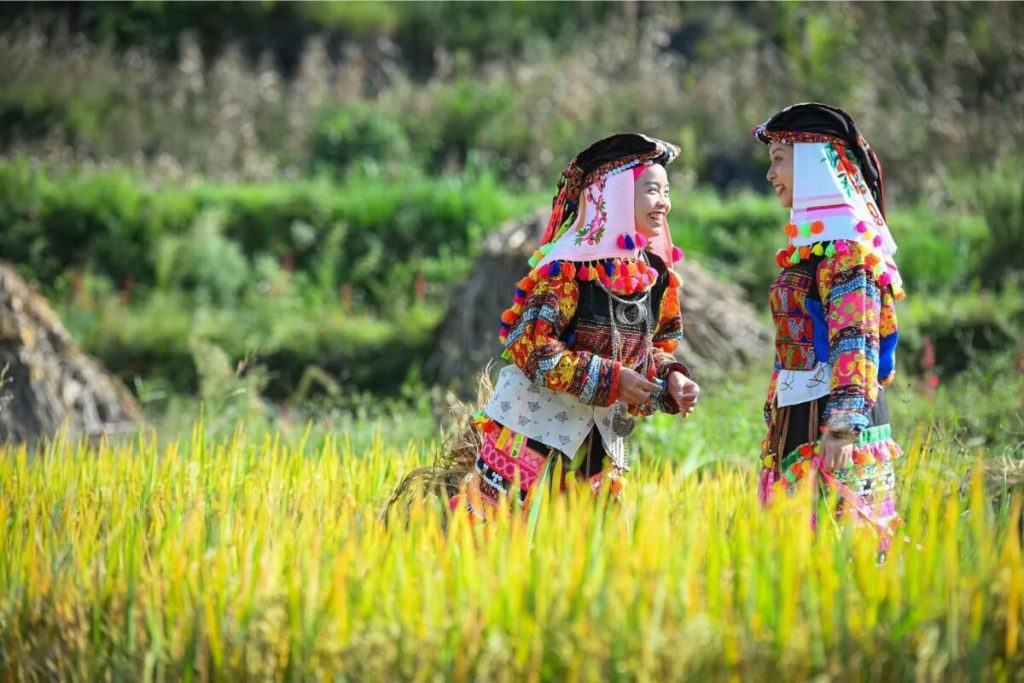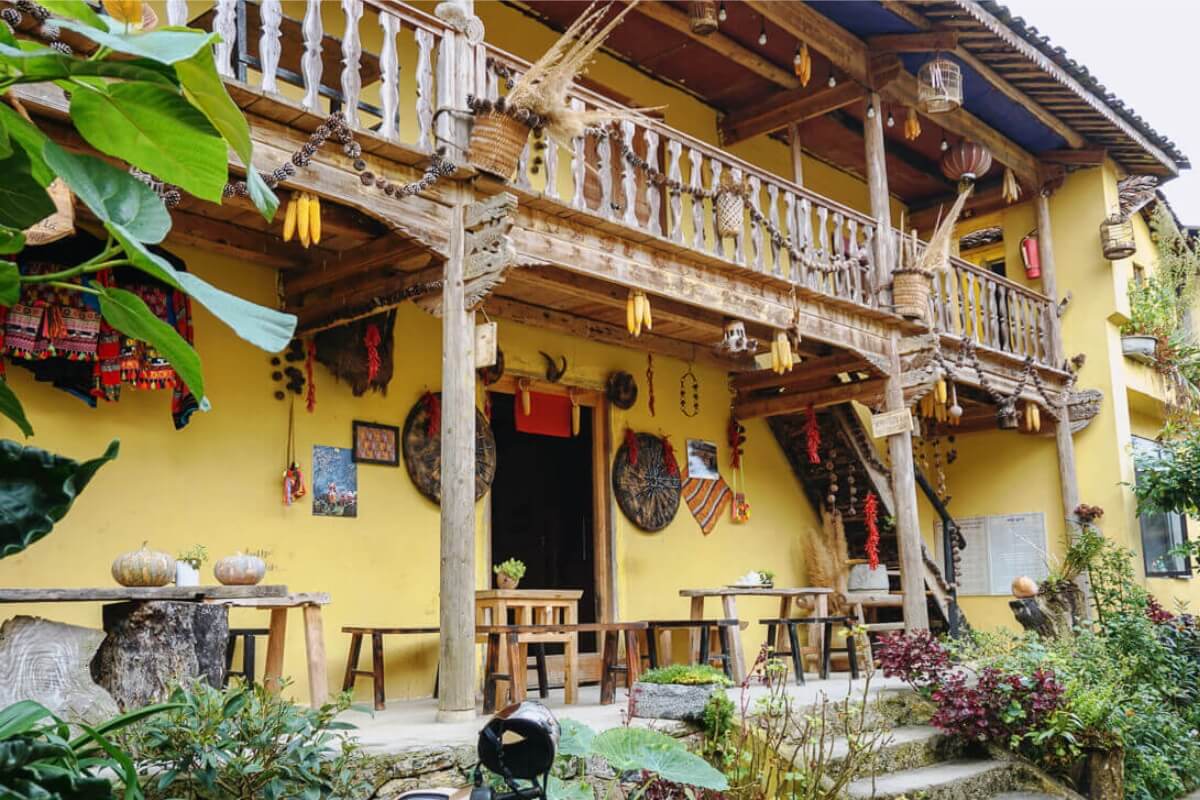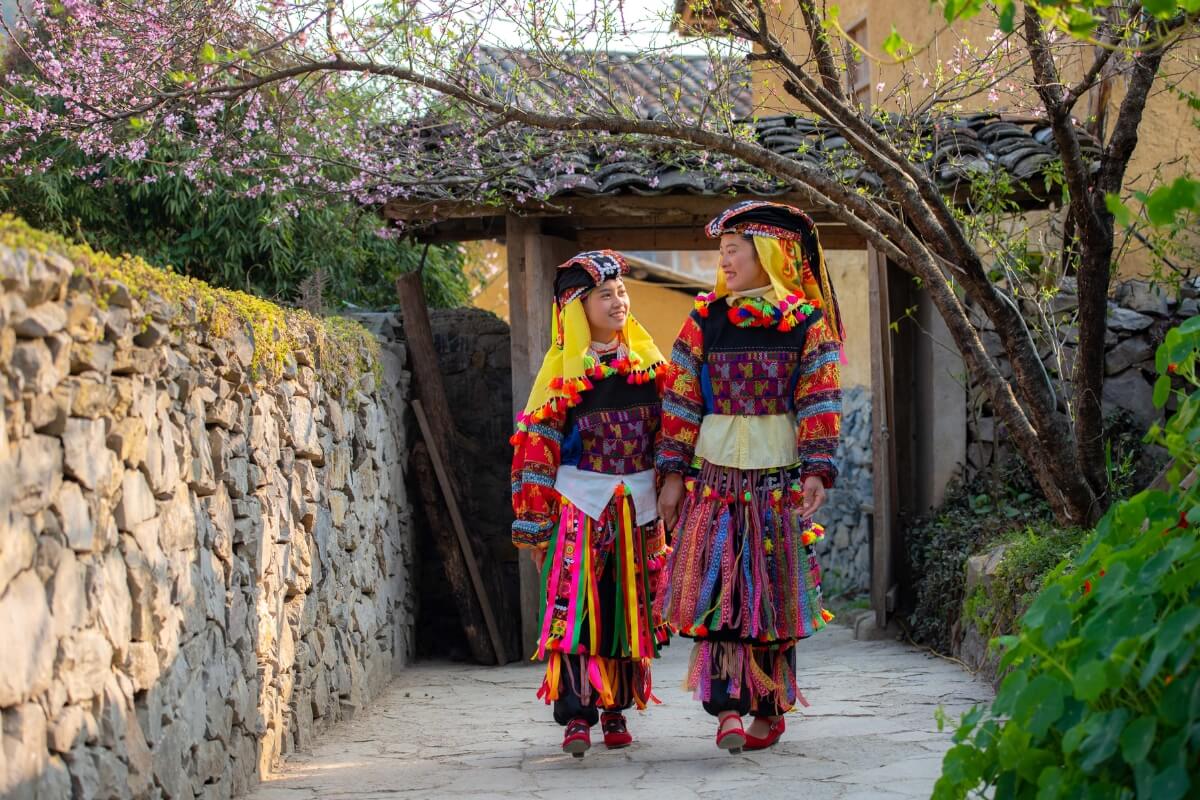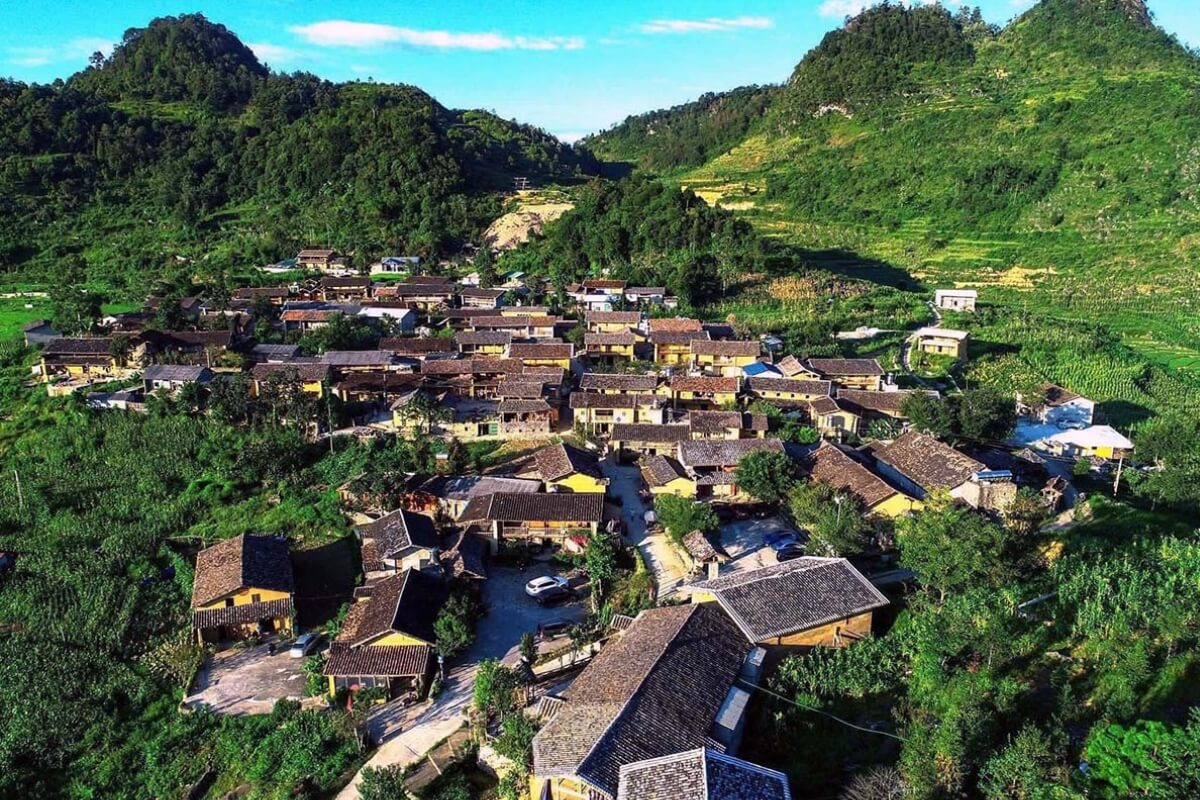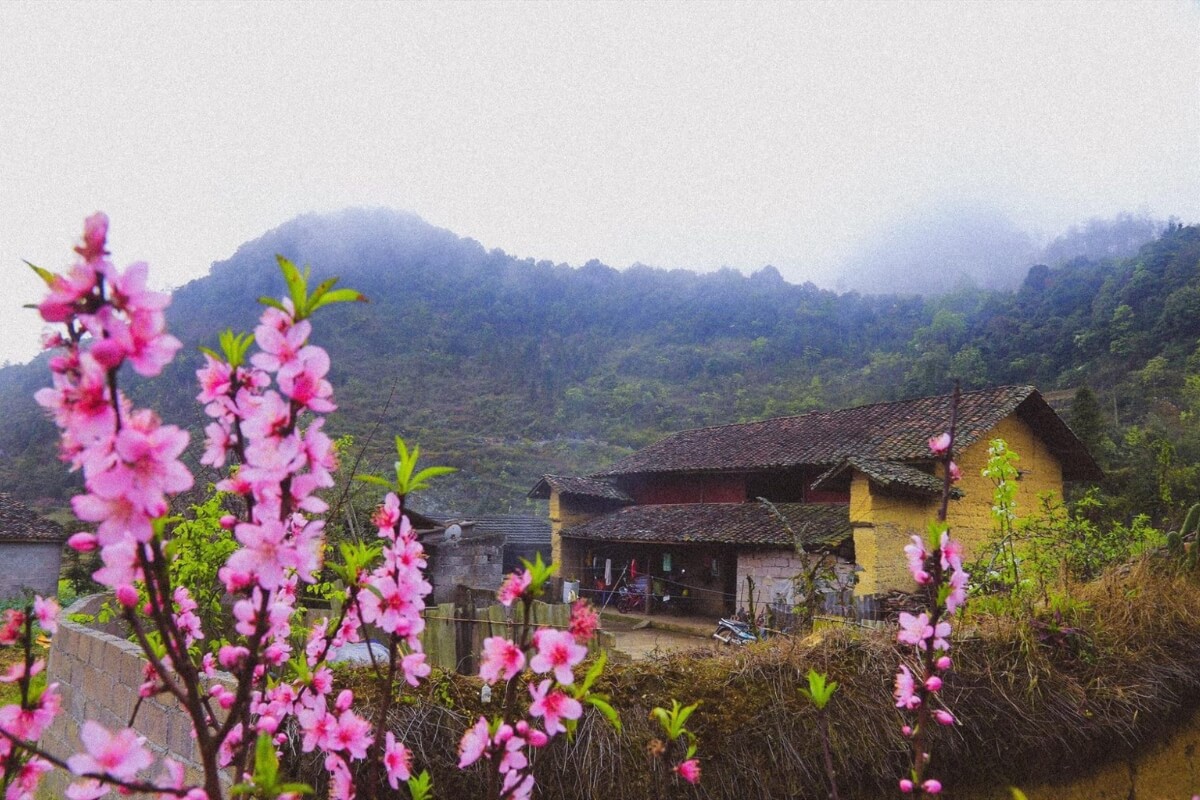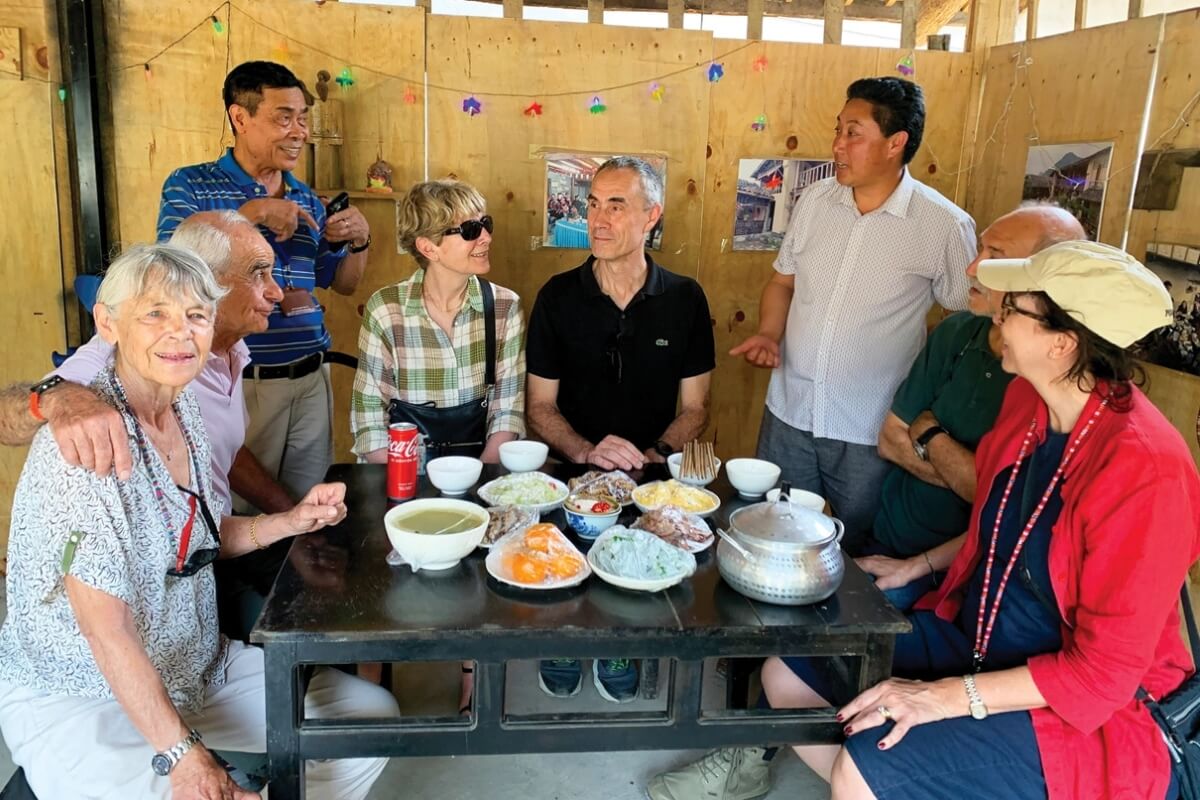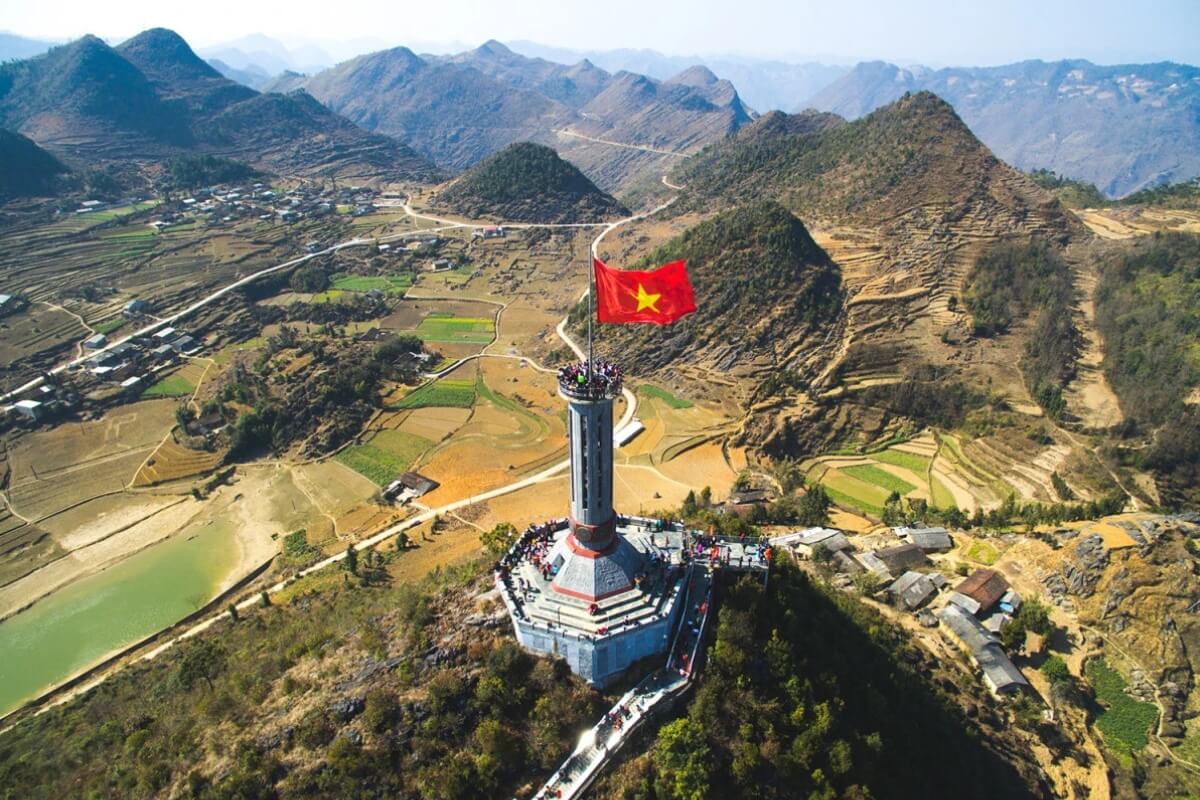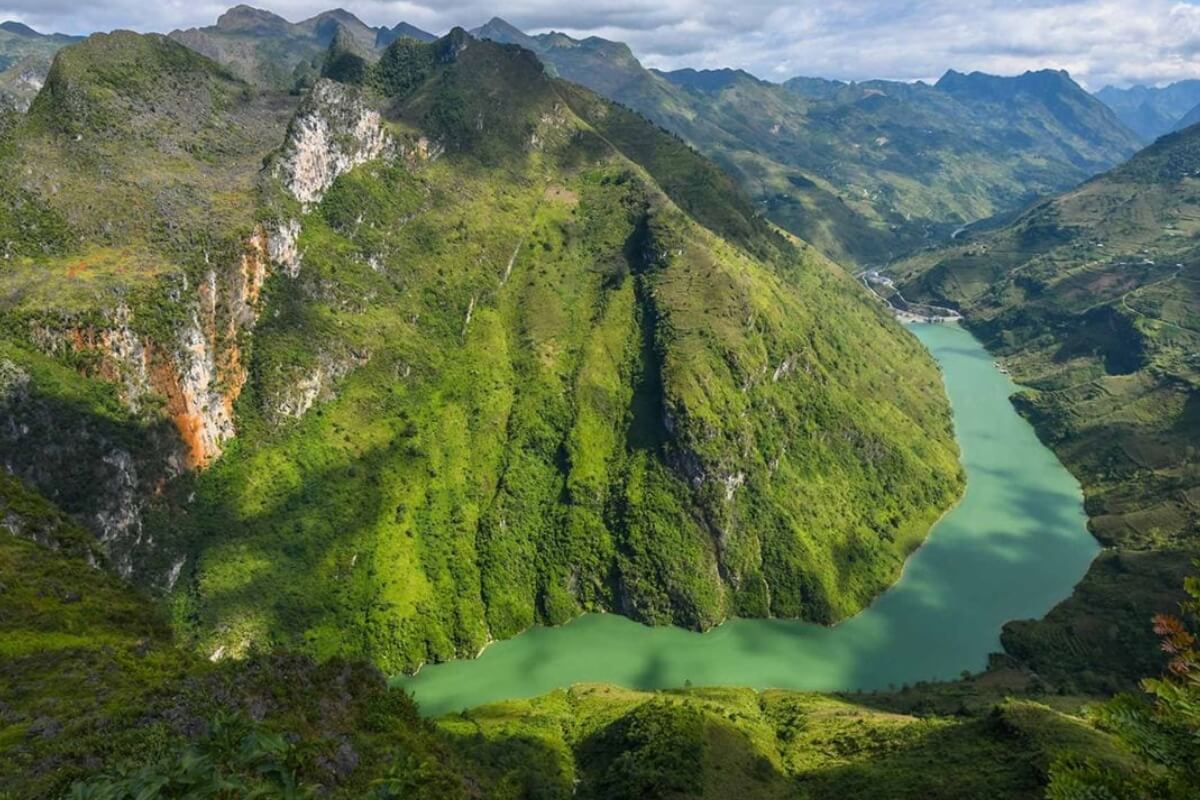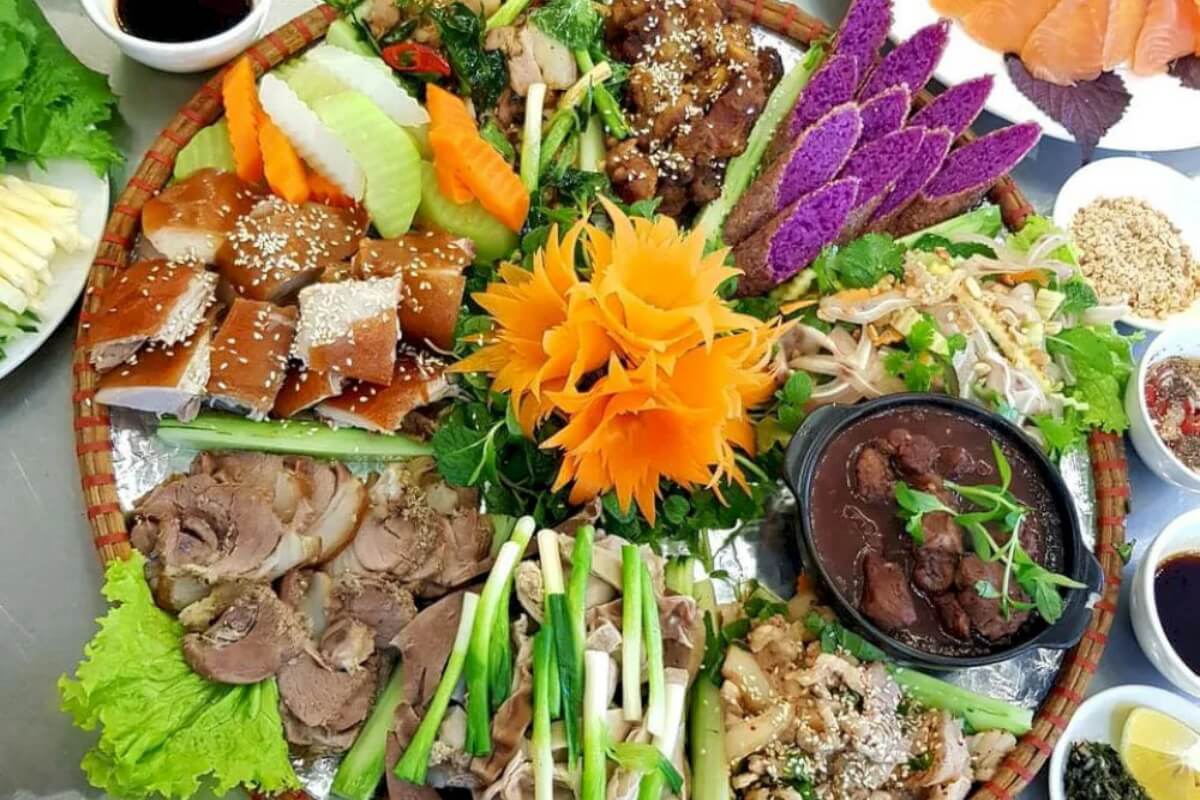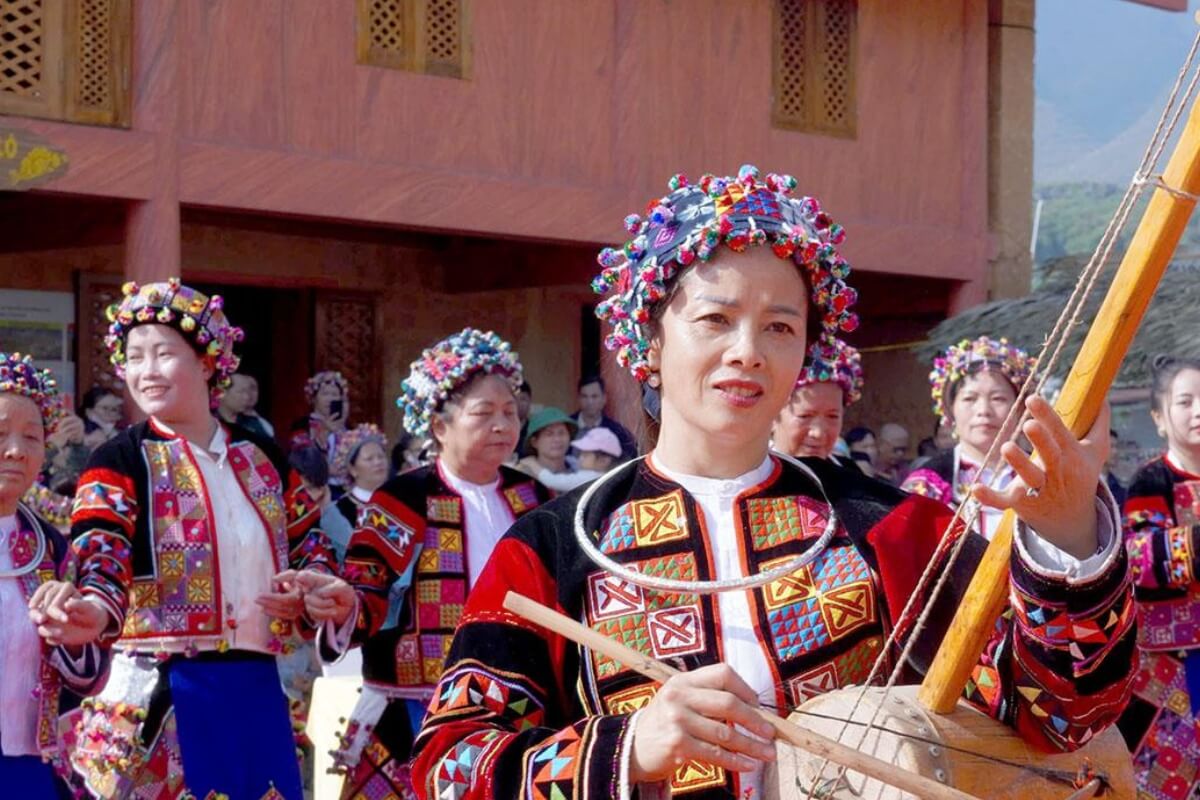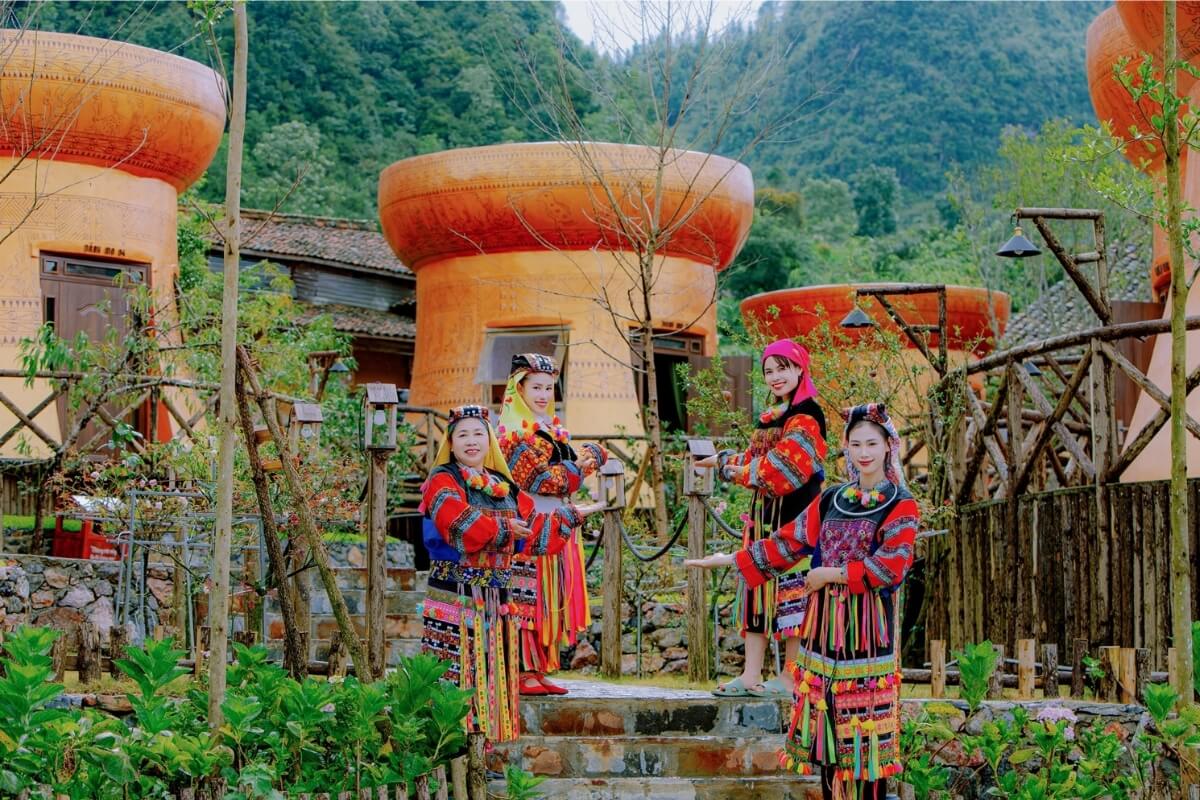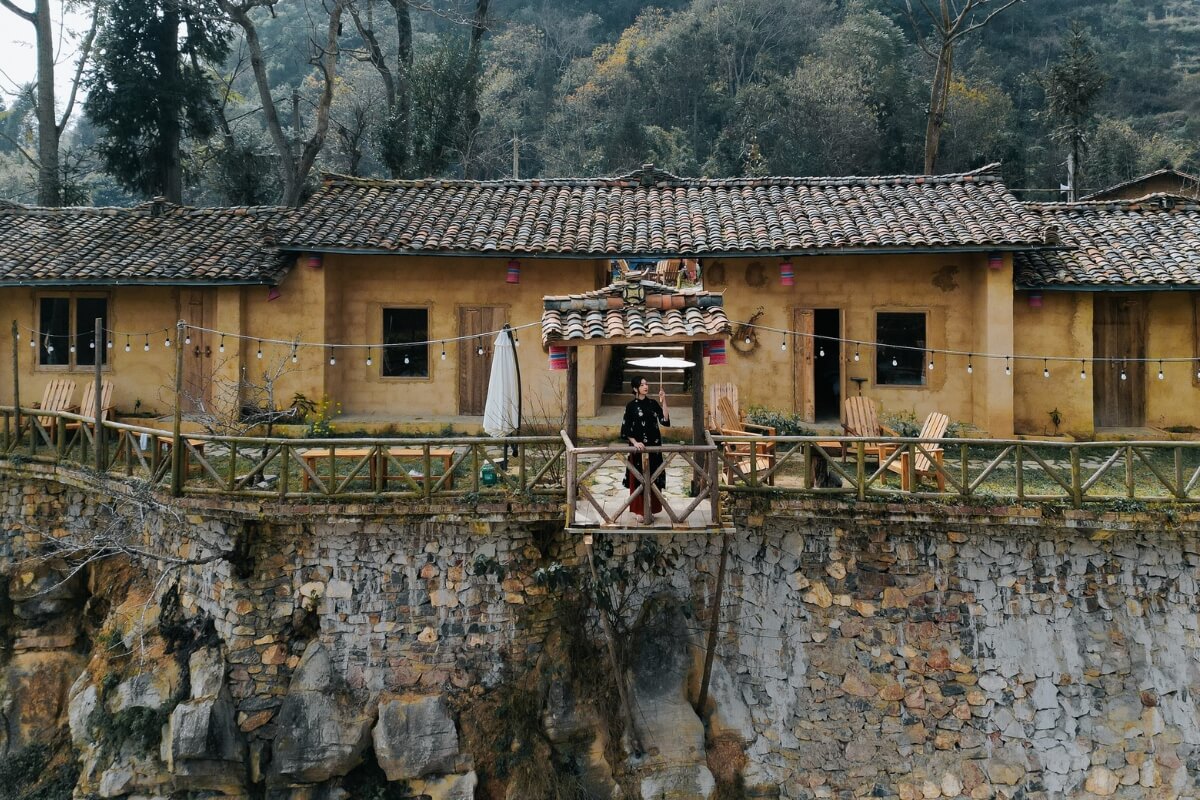Hanoi Tourist Attractions - Best Places to Visit in Hanoi
Lo Lo Chai Village Vietnam Named Among World’s Best Tourism Village in 2025
Explore Lo Lo Chai Village Vietnam – the most authentic village in North Vietnam, honored as the World’s Best Tourism Village 2025 by UN Tourism. Immerse in its colorful culture, mountain beauty, and warm-hearted Lo Lo people with Hanoi Local Tour.
Discover the Soul of Northern Vietnam in Lo Lo Chai Village
Tucked away in the misty mountains of Ha Giang, near the legendary Lung Cu Flag Tower, lies a hidden treasure of Northern Vietnam – Lo Lo Chai Village. Here, time seems to slow down. The whisper of the wind through ancient stone houses, the rhythmic hum of traditional looms, and the vibrant patterns of Lo Lo ethnic costumes tell stories that span generations.
On October 17, 2025, the United Nations Tourism Organization (UN Tourism) officially announced the list of the World’s Best Tourism Villages 2025 in Huzhou City, Zhejiang Province, China.
Among 270 applications from 65 UN Tourism Member States, Lo Lo Chai Village, representing Tuyen Quang Province, proudly rose to the list of 52 winners across 29 countries – a remarkable recognition that celebrates its unique cultural heritage, sustainable development, and authentic community-based tourism.
Lo Lo Chai Village welcomes you with open arms and genuine smiles. This is where travelers rediscover the essence of authenticity – and the soul of Vietnam.
Where is Lo Lo Chai Village?
Nestled in the far northern reaches of Vietnam, Lo Lo Chai Village lies peacefully at the foot of the Lung Cu Flag Tower, the symbolic northernmost point of the country. This picturesque North Vietnam village belongs to Lung Cu Commune, Dong Van District, in Ha Giang Province – a region renowned for its breathtaking mountain passes, limestone plateaus, and rich ethnic diversity.
Located about 25 kilometers north of Dong Van Town and approximately 500 kilometers from Hanoi, Lo Lo Chai sits at an altitude of nearly 1,600 meters above sea level, offering a cool climate all year round and mesmerizing views of terraced fields and misty peaks. The journey to the village is an adventure in itself, with winding mountain roads revealing the untamed beauty of northern Vietnam at every turn.
Unlike many other tourist spots that have been heavily commercialized, Lo Lo Chai Village retains its untouched charm. Its traditional stone houses, narrow pathways, and tranquil rhythm of daily life create an atmosphere that feels almost frozen in time. Here, the pace of modern life slows to the gentle beat of community harmony and nature’s rhythm — making it the perfect escape for those seeking authenticity and serenity.
The Lo Lo ethnic minority, who have inhabited this land for centuries, make up the heart and soul of the village. Their vibrant culture, colorful attire, and warm hospitality have turned Lo Lo Chai into not only one of Vietnam’s most authentic cultural destinations but also a shining example of how rural communities can embrace tourism sustainably.
In recent years, Lo Lo Chai has become a must-visit stop for travelers journeying through the Ha Giang Loop, attracting those who long for connection – with nature, with tradition, and with themselves.
The Authentic Beauty of Lo Lo People & Culture
The Lo Lo people, one of Vietnam’s smallest ethnic minorities, are known for their resilience, artistry, and deep connection to nature. Lo Lo Chai Village is a living museum of cultural heritage that has endured for centuries.
Women wear intricately hand-embroidered costumes that shimmer with color and symbolism, each stitch reflecting stories of love, harvest, and ancestry. Men build their homes from stone and clay using traditional techniques that blend harmoniously with the rugged mountain landscape.
Music and dance are essential to Lo Lo life. The sound of the bronze drum – the “soul” of the Lo Lo people – echoes during festivals and rituals, calling the community together in moments of joy and reverence. Throughout the year, visitors can witness celebrations such as the New Rice Festival or Spring Festival, where traditional performances bring ancient legends to life.
What truly defines Lo Lo Chai, however, is its warmth. Travelers often describe being welcomed “like family.” Sitting by a wood fire, sharing stories through gestures and smiles, you’ll discover that this small North Vietnam village holds one of the richest and most heartfelt cultural experiences in all of Southeast Asia.
Visit Lo Lo Chai Village with Hanoi Sapa Tours today to experience the beauty of Northern Vietnam!
How to Get to Lo Lo Chai Village
Reaching Lo Lo Chai Village is part of the adventure. The journey from Hanoi to Ha Giang City takes about 6–7 hours by car or bus. From Ha Giang, travellers continue north to Dong Van Town — another 145 kilometres along scenic mountain roads that wind through valleys and limestone cliffs.
From Dong Van, it’s a short 25-kilometer drive or motorbike ride to Lo Lo Chai, passing through picturesque villages and fields of corn and buckwheat. Most travelers prefer renting a private car or joining a guided tour through Hanoi Local Tour, ensuring comfort and safety while enjoying the stunning landscape along the way.
For the more adventurous, the Ha Giang Loop motorbike route is one of the most iconic journeys in Vietnam. The final stretch to Lo Lo Chai rewards riders with breathtaking views — and the warmest smiles awaiting them at the end of the road.
Best Time to Visit Lo Lo Chai Village
Nestled at the foot of Dragon Mountain (Long Son) and overlooking the poetic Nho Que River, Lo Lo Chai Village offers a different kind of beauty with every season. Depending on what you seek—vibrant culture, stunning landscapes, or tranquil escape—you can plan your trip accordingly.
Spring (February – April) – The Season of Blossoms and Festivals
Spring brings a new breath of life to Lo Lo Chai. The entire village is painted with soft pinks of peach blossoms and pure whites of plum flowers, creating a dreamy backdrop straight out of a postcard. It’s also the time for traditional Lo Lo festivals, where locals perform dances, drum rituals, and offer prayers for a prosperous year.
If you want to capture the most authentic cultural moments and see locals dressed in their brightly embroidered costumes, spring is undoubtedly the most enchanting season to visit.
Summer (May – August) – The Season of Green Terraces and Refreshing Nature
During summer, Lo Lo Chai becomes a paradise of lush greenery. The terraced rice fields begin to glow under the sunlight, while cool mountain breezes make this a refreshing retreat from the city’s heat.
Visitors can go hiking, explore nearby ethnic villages, or take a boat ride on the Nho Que River, gliding through the majestic Ma Pi Leng Pass. The weather is pleasant in the early mornings and late afternoons, perfect for outdoor adventures and photography.
Autumn (September – November) – The Golden Harvest Season
Autumn is often considered the most beautiful time to visit Lo Lo Chai Village. The terraced fields turn into a golden sea of ripened rice, glowing under the gentle sunlight. This is when the Lo Lo people harvest their crops, often accompanied by traditional songs and community gatherings.
It’s also an ideal time for travelers seeking authentic rural life, peaceful homestay experiences, and breathtaking sunrise or sunset views over the mountains.
Winter (December – January) – The Season of Tranquility and Soulful Charms
Winter brings a completely different charm. Mist gently embraces the mountains, creating a mystical, almost poetic scene. The weather can be chilly, especially in the mornings and evenings, but that’s also when the village fires light up—locals gather, share corn wine, and tell stories passed down for generations.
If you prefer a quiet, reflective escape surrounded by untouched nature, winter offers a deeply peaceful experience.
Each season paints a different picture of Lo Lo Chai. However, March to May and September to November are widely regarded as the best times to visit—when the weather is most pleasant, and both nature and culture are at their most vibrant.
Things to Do in Lo Lo Chai Village
Exploring Lo Lo Chai Village is like stepping into a living postcard — every path, every smile, and every sound tells a story of authenticity. This North Vietnam village invites travelers to slow down, breathe in the mountain air, and connect deeply with its people, nature, and culture.
Below are the most unforgettable experiences you shouldn’t miss when visiting the World’s Best Tourism Village 2025.
Immerse Yourself in Lo Lo Culture and Daily Life
One of the most enriching experiences in Lo Lo Chai Village is simply being part of everyday life. The villagers’ days begin with the sound of roosters crowing, smoke curling from kitchen fires, and the rhythmic beat of weaving looms.
You can join locals in traditional craft-making, such as embroidery, sewing, or silver jewelry crafting. Each piece tells a personal story – patterns inspired by nature, mountains, and family history. These workshops not only provide hands-on experience but also directly support local artisans, helping to preserve the delicate art forms that define Lo Lo heritage.
Visitors can also participate in agricultural activities, depending on the season — planting corn in the spring, harvesting buckwheat in autumn, or picking tea leaves in the highlands. Sharing these simple yet meaningful moments with the villagers is what transforms a trip into a true cultural exchange.
And when evening falls, join a Lo Lo family meal around a wooden table, savoring homemade dishes while learning stories of love, resilience, and mountain life. These are not tourist performances – they are genuine moments of connection that reveal the beating heart of Lo Lo Chai Village.
Visit Iconic Landmarks and Scenic Spots in Lo Lo Chai Village
A visit to Lo Lo Chai Village would not be complete without exploring its stunning surroundings.
Just a short walk away stands the Lung Cu Flag Tower, one of Vietnam’s most symbolic landmarks. Sitting atop Dragon Mountain (Long Son), the flagpole proudly marks the country’s northernmost point. From here, you can gaze down upon the entire Lo Lo Chai Village, nestled amid green valleys and winding trails. The panoramic view is breathtaking — a sea of terraced fields, stone houses, and distant limestone peaks stretching into China’s Yunnan Province.
Back in the village, wander among centuries-old stone houses with dark-tiled roofs, weathered wooden doors, and colorful flags fluttering in the breeze. Each home reflects the architecture of the Lo Lo people – strong, warm, and deeply connected to the earth.
You can also trek through Dong Van Karst Plateau, a UNESCO Global Geopark that surrounds the area. The surreal limestone formations, vast canyons, and mist-covered hills offer countless photo opportunities. Whether you choose to hike, cycle, or ride a motorbike, the landscapes of this North Vietnam village promise endless wonder.
During late October and November, don’t miss the buckwheat flower season, when the hills around Lo Lo Chai turn into a pastel carpet of pink and purple blossoms – a photographer’s dream and a moment of pure tranquility.
Experience Local Cuisine and Traditional Festivals in Lo Lo Chai Village
Food in Lo Lo Chai Village is as genuine as the people who prepare it. Each meal is crafted from ingredients grown on the surrounding hills — organic, seasonal, and bursting with flavor.
Start your culinary adventure with men men, a local dish made from finely ground corn, steamed until soft and fragrant. Pair it with smoked buffalo meat, buckwheat pancakes, and a cup of warm corn wine, a traditional Lo Lo beverage served to welcome guests. Every dish tells a story of mountain life — simple, sustainable, and full of heart.
Throughout the year, travelers can witness or join Lo Lo festivals, where music, dance, and rituals bring the community together. The New Rice Festival celebrates the harvest season with vibrant costumes, bronze drum performances, and joyful dances symbolizing gratitude to the ancestors. Meanwhile, the Spring Festival marks new beginnings, when villagers perform ancient songs and offer prayers for prosperity.
During these events, visitors are often invited to join – to dance, to share a meal, to laugh. These shared moments transcend language and create lifelong memories. Experiencing a Lo Lo festival is to see this best tourism village come alive in a swirl of color, sound, and human warmth.
Stay in Homestay for a Deeper Connection with Local People
To truly understand the rhythm of life in Lo Lo Chai Village, stay at least one night. The Lo Lo homestays are simple yet charming, built from local stone and wood, often decorated with traditional textiles handwoven by the hosts.
Evening descends softly over the mountains – villagers gather by the fire, sharing stories as stars appear in the sky. Without city lights or noise, the silence of Lo Lo Chai is almost spiritual. It’s a moment of stillness that many travelers describe as “the highlight of the entire Ha Giang journey.”
Waking up to the sound of roosters and mountain breezes, sipping tea while watching the sunrise over the limestone peaks – this is the magic of Lo Lo Chai, where nature and humanity exist in perfect harmony.
Where to Stay near Lo Lo Chai Village
For an authentic stay, book a night in a Lo Lo homestay, where wooden interiors, handwoven blankets, and warm hospitality make you feel truly at home. Most homestays offer clean, comfortable rooms, hearty home-cooked meals, and a genuine chance to connect with local hosts.
If you prefer more comfort, nearby Dong Van Town offers charming boutique hotels and eco-lodges with modern amenities. Hanoi Local Tour can arrange seamless accommodation options – from traditional family stays to premium eco-retreats overlooking the mountains – ensuring your experience is both authentic and relaxing.
Experience Lo Lo Chai Village with Hanoi Local Tour
As one of the World’s Best Tourism Villages 2025, Lo Lo Chai Village embodies the harmony between tradition, nature, and sustainable growth.
Plan your visit with Hanoi Local Tour https://www.hanoilocaltour.com/ – the local expert in crafting immersive cultural journeys across Vietnam. Let us take you beyond sightseeing to feel the heartbeat of the mountains, the warmth of its people, and the magic of Lo Lo Chai Village.

